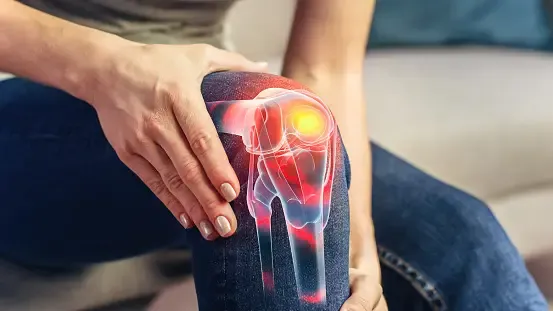john@lee-mat.com
+86-13510662576

GET QUOTE
Having Pain Behind the Knee, What Does It Mean?
Experiencing pain behind the knee is not uncommon and can result from various causes, ranging from muscle strain to more serious issues like arthritis. Understanding the potential reasons for this discomfort is crucial for proper care.
Knee pain is widespread, affecting approximately one in four adults. It's essential to pay attention to the specific nature of the ache. Some instances of pain behind the knee may necessitate immediate medical attention. For instance, blood clots can cause numbness and weakness in the leg, and fevers with redness and swelling should also be promptly addressed.
If knee pain follows a significant trauma, such as a fall or car accident, an emergency room visit is recommended. Additionally, persistent knee pain lasting beyond a week or two, especially without prior injury, warrants a doctor's consultation.
Situations and Reasons of Pain Behind the Knee
Meniscus Tear
A tear in the meniscus, a shock absorber between the thigh and shins, is a common cause of pain behind the knee. Symptoms may include a popping sensation, pain, stiffness, and catching or locking in the knee.
Arthritis and Gout
Arthritis, including osteoarthritis, psoriatic arthritis, lupus, and rheumatoid arthritis, can contribute to knee pain by breaking down the cartilage between joints. Gout, a form of inflammatory arthritis, is another potential culprit.
Baker's Cyst
Named after its describer, William Morrant Baker, a Baker's cyst is a fluid collection from the front to the back of the knee, often accompanied by arthritis or a meniscus tear. Treating the underlying cause is key to resolving the pain associated with a Baker's cyst.
Calf or Hamstring Strain or Cramp
Sudden activity and overuse can lead to pain behind the knee due to a calf or hamstring strain or cramp. Rest, ice, gentle stretching, and anti-inflammatories are effective management, but persistent pain or swelling requires medical attention.
Ligament Injuries
Ligament injuries, such as a partially or entirely torn ACL or MCL, could contribute to behind-the-knee pain. Athletes are prone to ACL tears, often occurring during twisting motions, while MCL tears result from external forces. The RICE approach (rest, ice, compression, and elevation) helps reduce pain and swelling in such injuries.
Understanding the potential causes of pain behind the knee allows for informed decisions regarding appropriate care and timely medical intervention when necessary.
When to Seek Help?
Now that we've unraveled some possibilities, when should you consider seeking professional advice? If your knee pain persists for an extended period, or if it's accompanied by swelling, redness, or a limited range of motion, it's time to consult a healthcare professional. Ignoring these signals is like turning up the volume on a car engine – it might work for a while, but eventually, it's going to break down.
Simple Solutions for Relief
Fear not, for there are simple solutions to alleviate pain behind the knee. First and foremost, give your knees some rest. Let them kick back and relax, metaphorically speaking. Ice packs can also be your best buddies – a cool, soothing touch to calm down any inflammation.
Consider investing in supportive footwear. It's like giving your knees a hug with every step. And don't forget gentle stretches. Think of it as a morning stretch for your knees – they deserve it.
Conclusion
In conclusion, pain behind the knee is like a cryptic code your body is sending you. Deciphering it involves understanding your lifestyle, acknowledging potential issues, and taking proactive steps toward relief. Whether it's a common culprit like overuse or a stealthy Baker's cyst, your knees are telling a story. Listen, take action, and let your knees dance without the pain.

